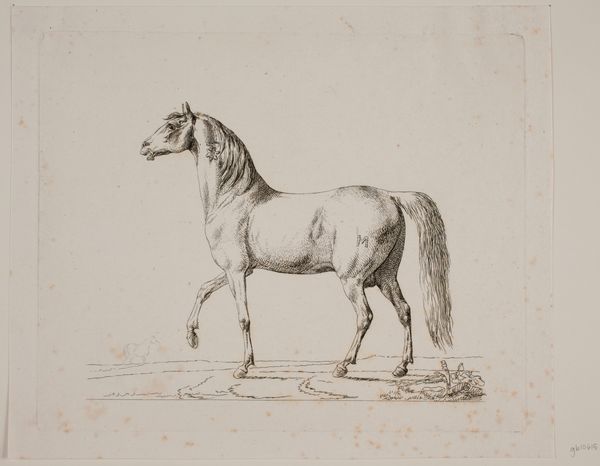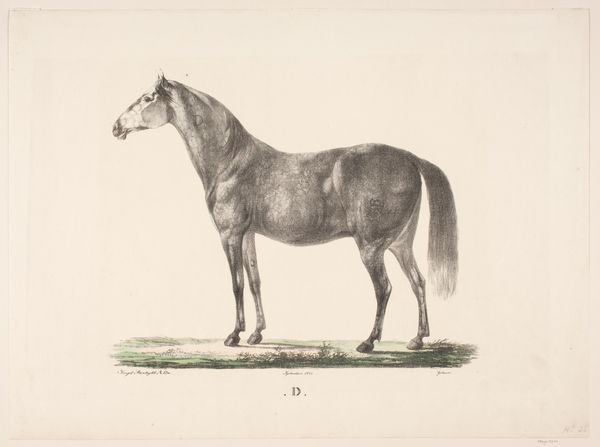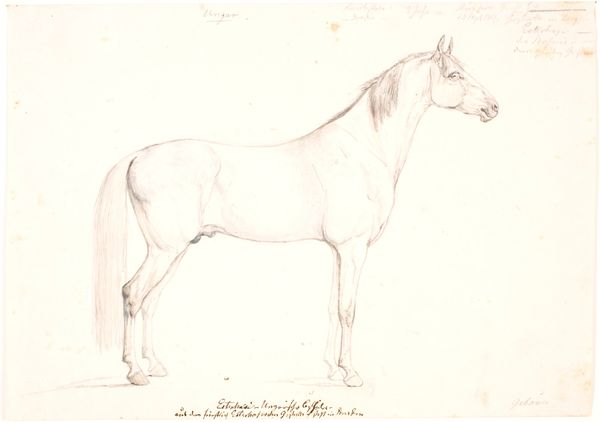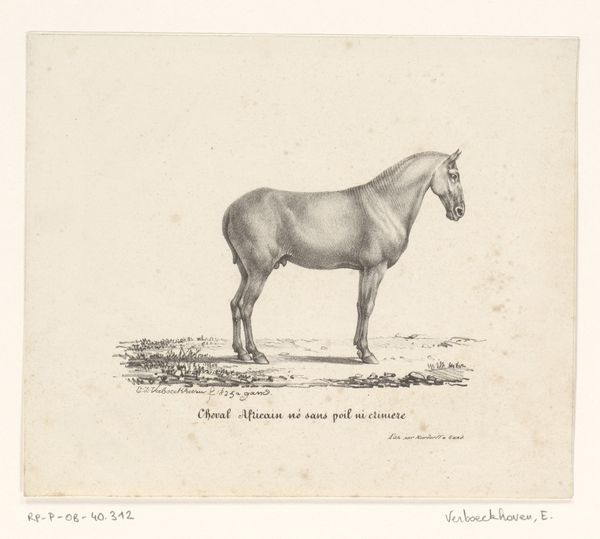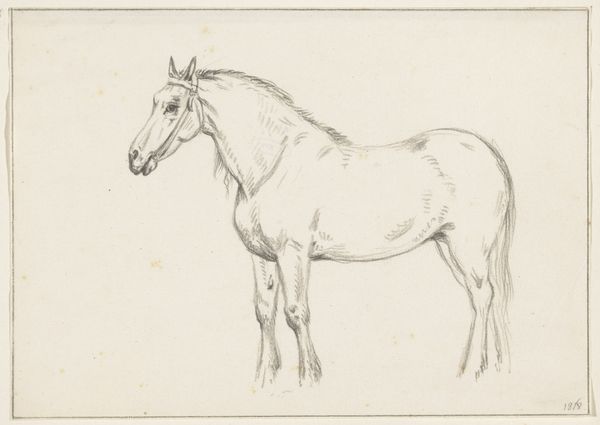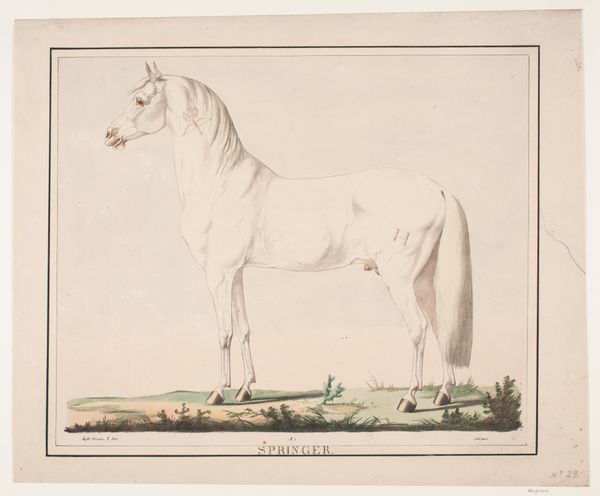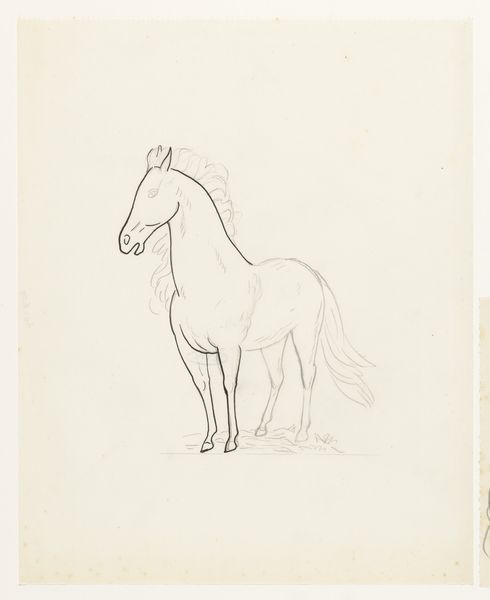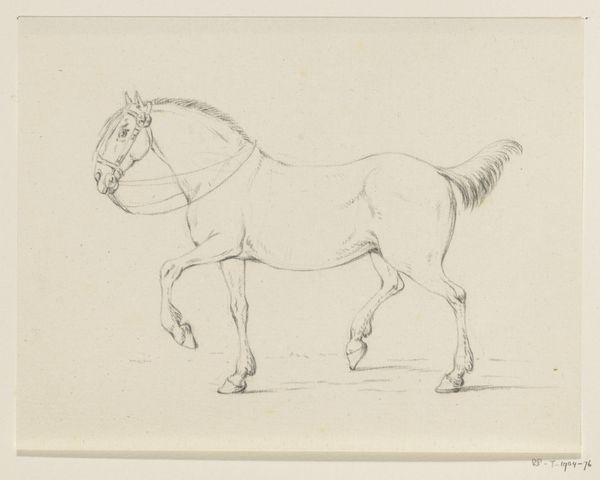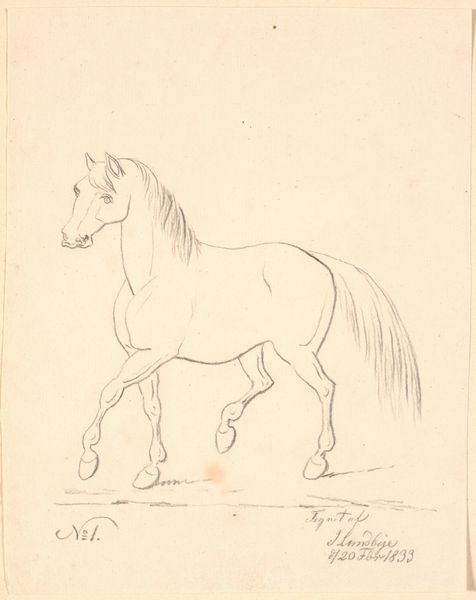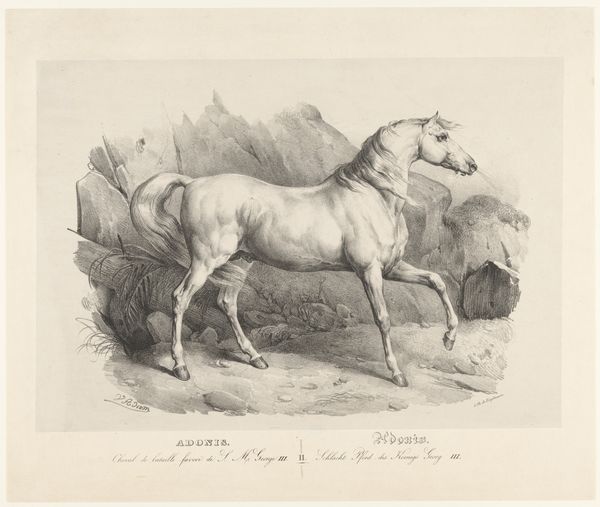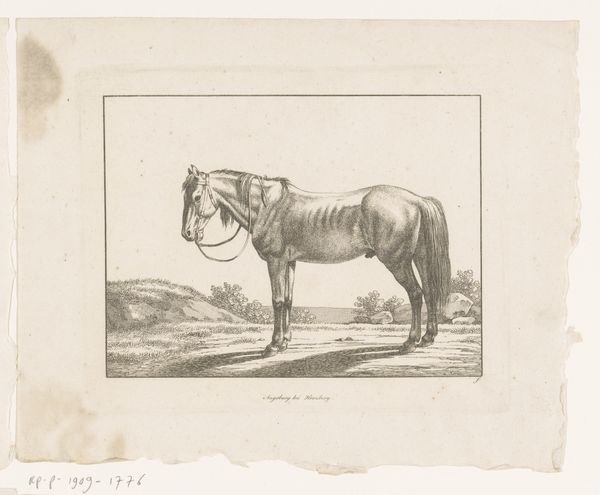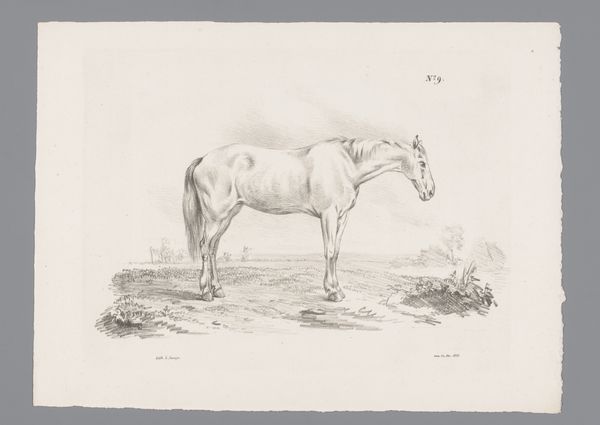
drawing, pencil, graphite
#
portrait
#
drawing
#
pencil sketch
#
pencil drawing
#
pencil
#
horse
#
graphite
#
realism
Dimensions: height 373 mm, width 448 mm
Copyright: Rijks Museum: Open Domain
Editor: So, this is "Arabische hengst," or "Arabian Stallion," an 1818 pencil drawing by Abraham Vinkeles, housed in the Rijksmuseum. It’s such a striking image, almost photographic in its detail. What do you see in this depiction that speaks to its time? Curator: It’s fascinating to consider this drawing within the context of early 19th-century European interests in the "Orient." We see a growing fascination with Arab culture and horses were central to this romanticized view. Consider how the Napoleonic campaigns in Egypt sparked intense curiosity. What role might this artwork play in shaping European perceptions of the Arab world? Editor: So, it’s not just a simple horse portrait; it’s about cultural appropriation? Curator: It’s more nuanced. Images like these circulated within specific social circles – think of aristocratic families breeding Arabian horses. The drawing served not just as an artwork, but as a form of documentation, almost scientific in its precision, fitting within the burgeoning field of natural history and its classification systems. Editor: That makes sense. I hadn't thought about the scientific aspect of it. So, this image then has a social and political role intertwined with its artistic purpose. Curator: Exactly. It reveals how art actively shaped, and continues to shape, our understanding of different cultures and power dynamics. Editor: It is thought-provoking how a seemingly simple drawing opens up broader questions about cultural exchange and representation. Curator: Indeed. It underscores that museums and galleries influence how we understand socio-political forces throughout history.
Comments
No comments
Be the first to comment and join the conversation on the ultimate creative platform.

